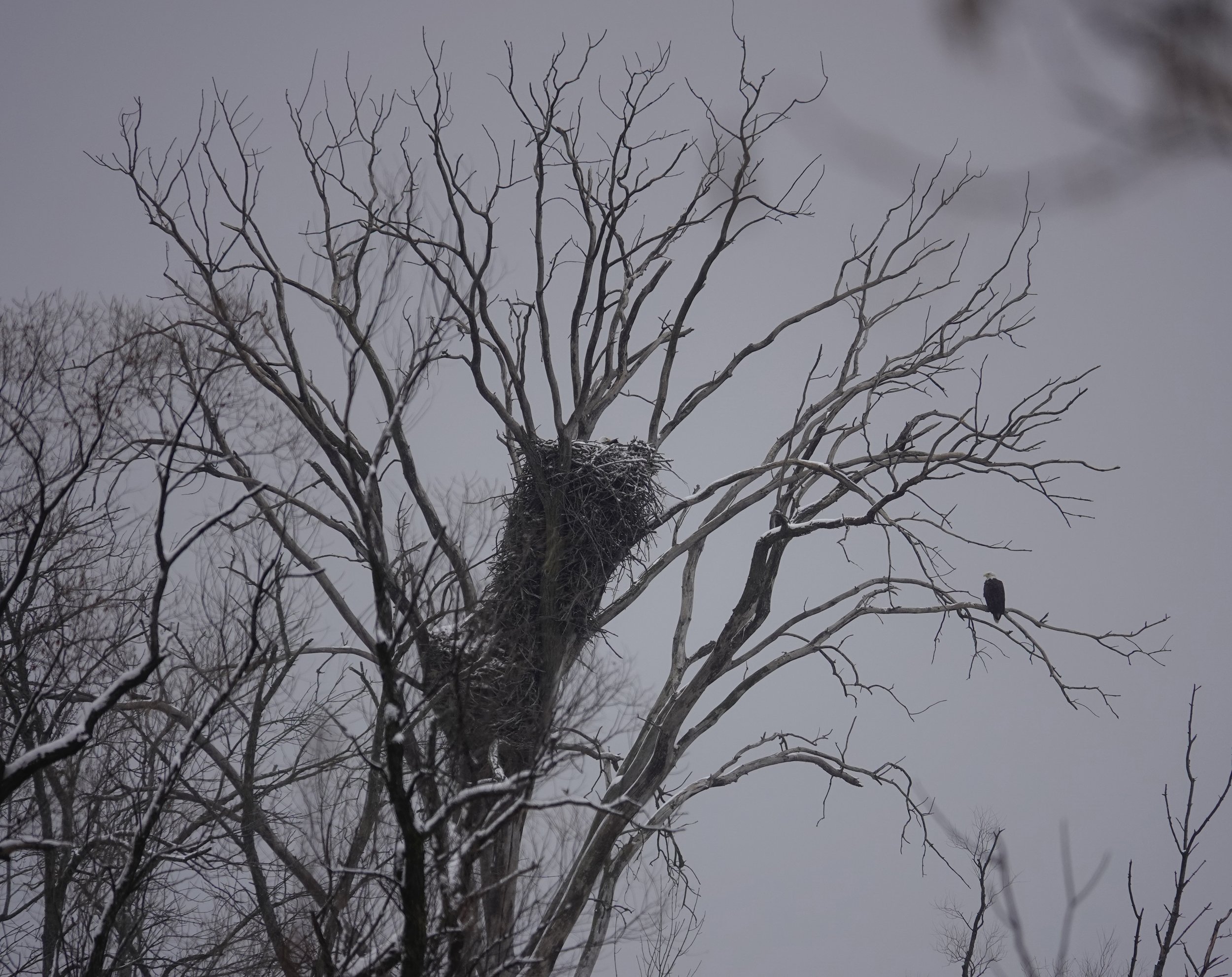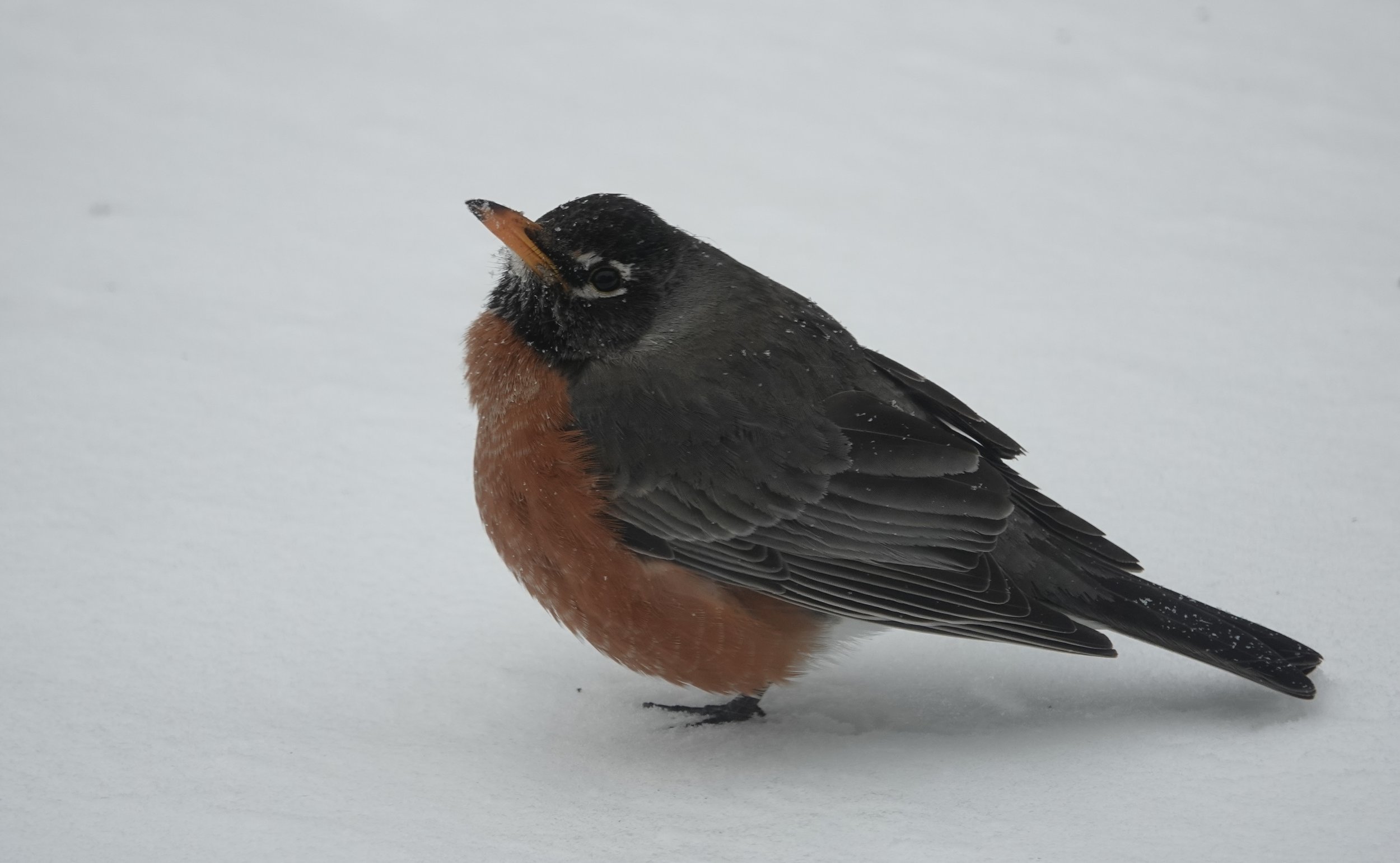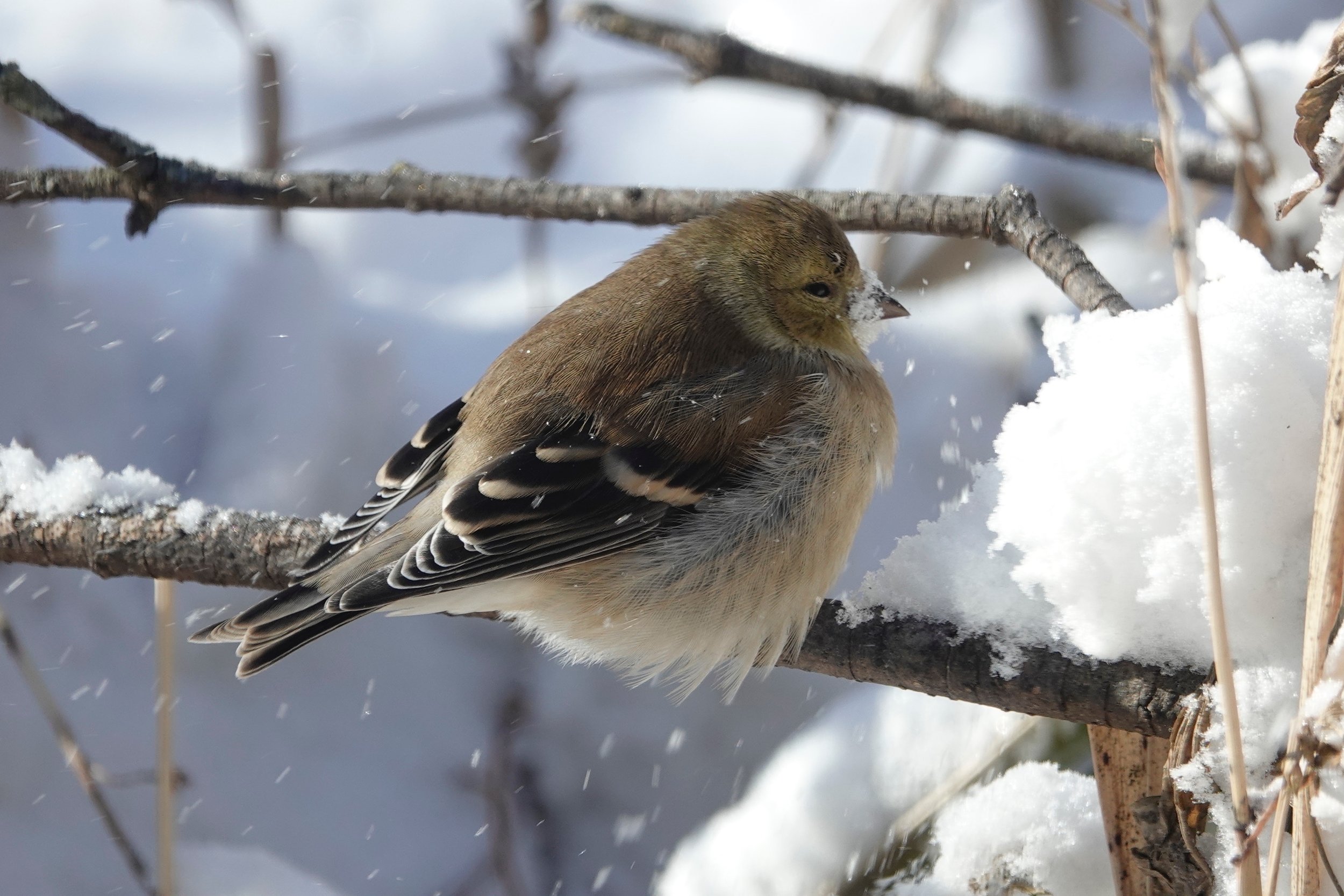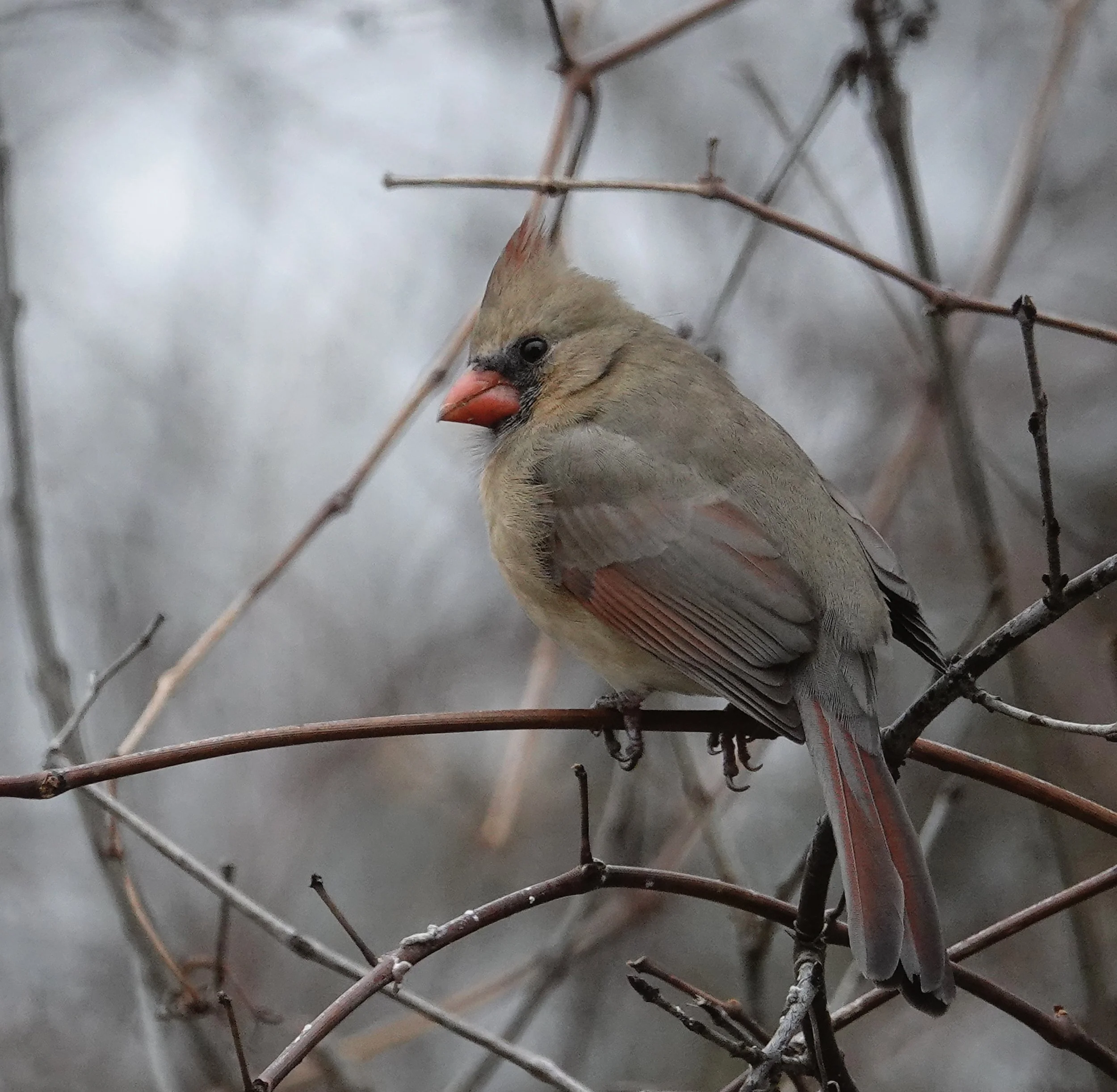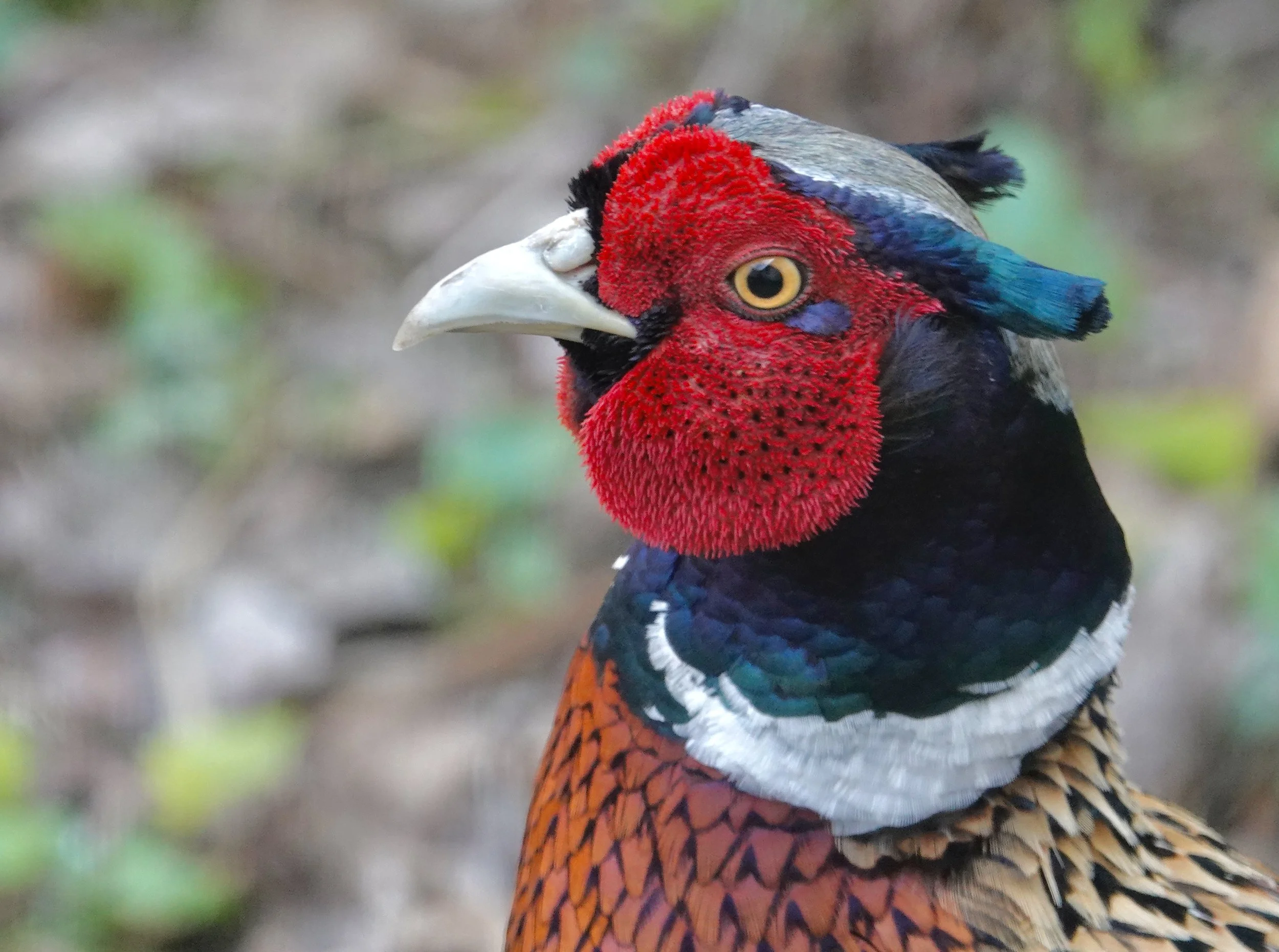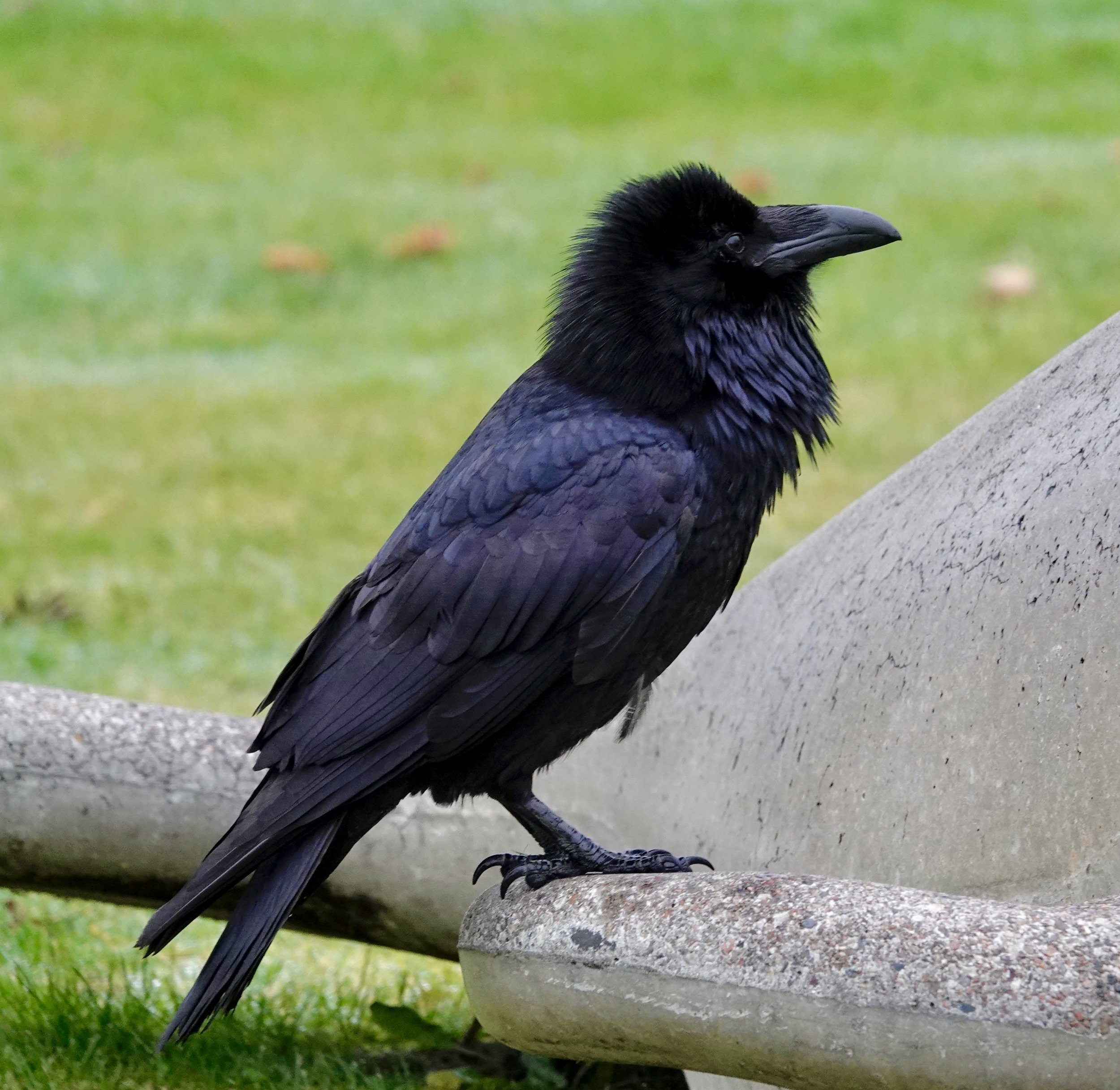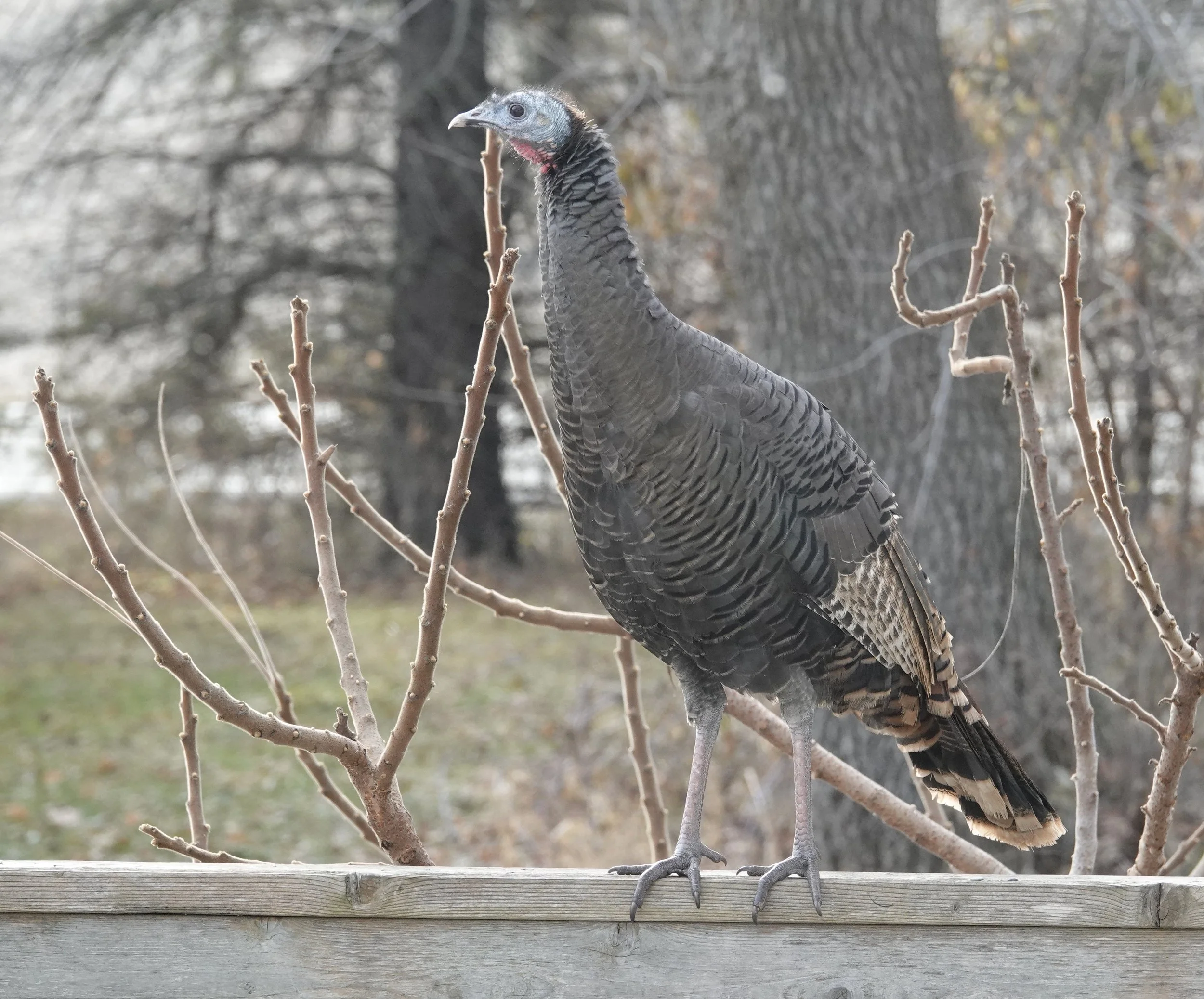Naturally
The robin sang, “cheerily, cheer up, cheer up, cheerily, cheer up.” It was a good morning. The rain had fallen. It rarely ascends. Flowers stuck their noses out of the ground to sniff the spring air. I wondered what a wet squirrel smelled like as I watched one move dexterously through the wet trees like a mini-Tarzan without a vine to swing on.
I tossed some millet onto the ground for the native sparrows. Juncos enjoy that seed, and their gray and white bodies covered the seedy ground. Between the snowbirds and the American tree sparrows, there was little room for anything else. A couple of song sparrows, a few purple finches and house finches, and one more species. I watched the double-scratch behavior of a handsome fox sparrow. It used a backward kick it performed simultaneously with both feet to find food in the leaf litter. I want to give that a try, but I’m afraid I’d fall beak first into the scattered millet. Each time I see fox sparrows, I want to do for them what the Trashmen did for Surfin’ Birds.
During the last couple of snowfalls, I’ve put raisins and bits of suet out for the robins. They sampled those products but were more interested in eating the millet. I took photos to make sure that’s what they were eating. Mourning doves like millet, too.
For a live view of a greater prairie chicken lek on the Bluestem Prairie Scientific and Natural Area near Glyndon in northwestern Minnesota go to: https://www.dnr.state.mn.us/wildlife/window-wildlife.html
In times of war, some soldiers used ground acorns as a coffee substitute. Acorn coffee was made during the American Civil War, and the Germans made their version during the World Wars, calling it ersatz coffee. It requires a leaching process. It could serve as a highly nutritious substitute in any recipe where you would use cornmeal. Acorns are also used in flatbreads, tortillas, cornbread-type confections, pancakes and honey cakes.
Lynne Wasmoen of Emmons sent me a photo of a shrike that had met its demise by colliding with a window. A shrike in Minnesota in the summer is a loggerhead, and one in the winter is a northern. But in April, who knows? They’re often called “butcher birds” and are both a songbird and a predator of songbirds. Shrikes sometimes kill more prey than they need, but don't let it go to waste. They store food for later by impaling their prey on the spines of trees or barbed wire. The shrike’s facial band tells the tale as far as ID goes. I couldn’t see where the mask met the bill in the photo. A loggerhead shrike has a thicker eye band. A northern shrike has a noticeably thinner eye band that doesn’t extend over the eyes or above the bill. The Lone Ranger wore a mask to keep his identity a secret. Not being able to see a mask kept this shrike’s identity a secret.
Dr. Brandon Miller of the University of Minnesota Department of Horticultural Science said that a ginkgo tree is a good choice to plant where every other tree has died. It’s a tree that can withstand poor conditions. Female ginkgo trees produce seeds with fleshy coverings. When those coverings ripen in the fall, they produce a foul and pungent scent, often compared to the smell of dog feces.
Q&A
“I saw a rabbit with black horns. What’s going on?” Rabbit papillomas are growths on the skin caused by the papillomavirus and don’t infect other species. The growths, made up of mostly keratin, have no significant effects on wild rabbits unless they interfere with eating/drinking. The black nodules on the skin are usually on the head and can become elongated, taking on a hornlike appearance. They might be the origin of the jackalope. Most infected cottontails survive the viral infection and the growths go away. The virus spreads through direct contact and possibly through biting vectors such as ticks.
Bad jokes about nature department
“It wasn’t me,” said the skunk back when skunks could talk.
Unless you have a lot of time, never ask a grandfather buck rabbit about his grandkids.
An afternoon shadow is good when you’re feeling low.
The ether bunny can put you to sleep.
The days are getting longer, but they’re still 24 hours long.
I watched a grackle using a laptop. It was probably checking its stock portfolio. Some birds adapt well to a human environment.
What’s the largest ant? A giant.
Thanks for stopping by
“Life's most persistent and urgent question is, 'What are you doing for others?”—Martin Luther King, Jr.
”I've learned that you shouldn't go through life with a catcher's mitt on both hands. You need to be able to throw something back.”—Maya Angelou.
Do good.
©Al Batt 2024
Once abundant, populations of the rusty blackbird have declined an estimated 85-95% in 40 years. The only North American blackbird more troubled is the tricolored blackbird, a declining blackbird of West Coast wetlands. Scientists aren’t sure why the bird is in chronic decline. Migrating rusty blackbirds like damp habitats. They have piercing yellow eyes. Photo by Al Batt.


